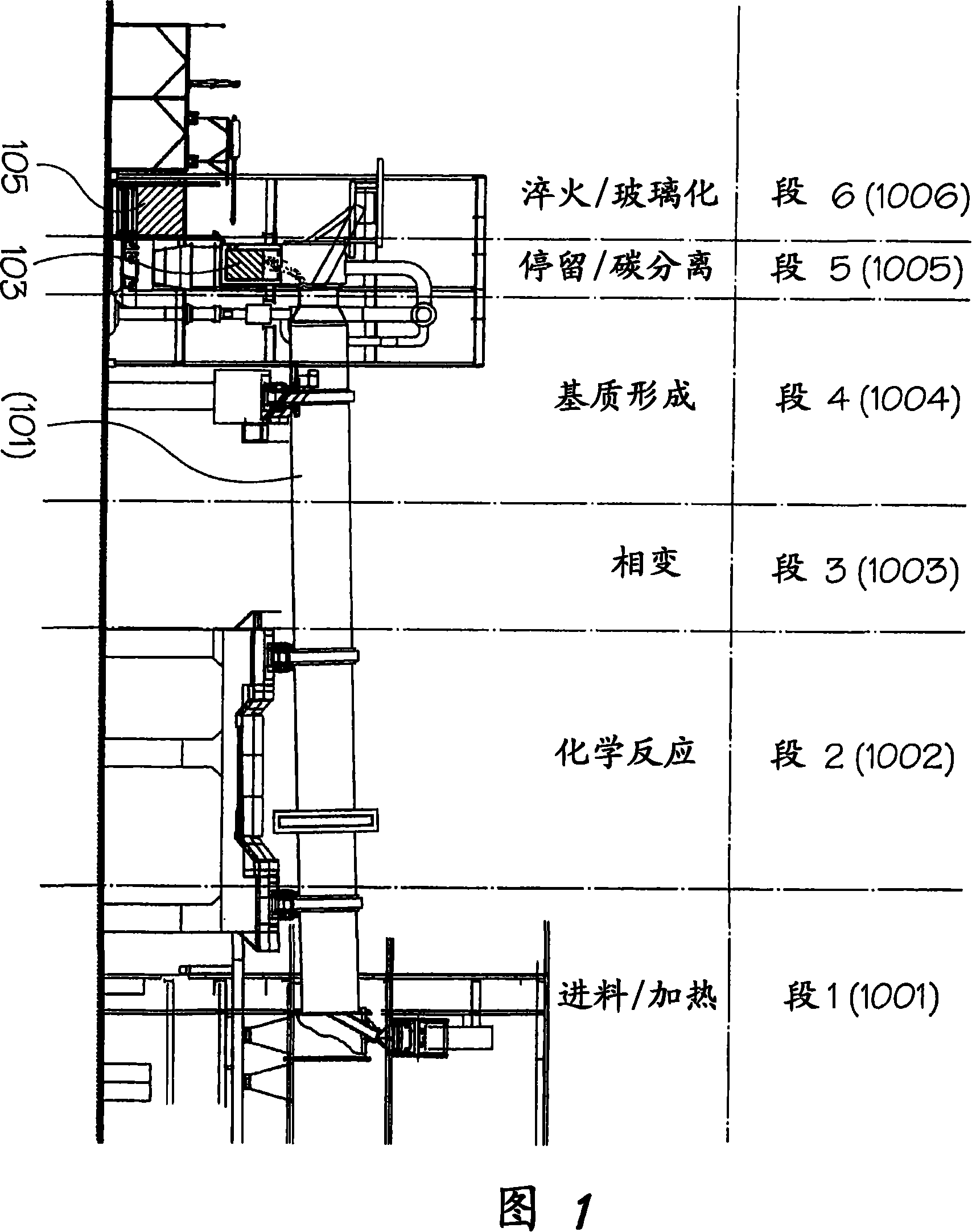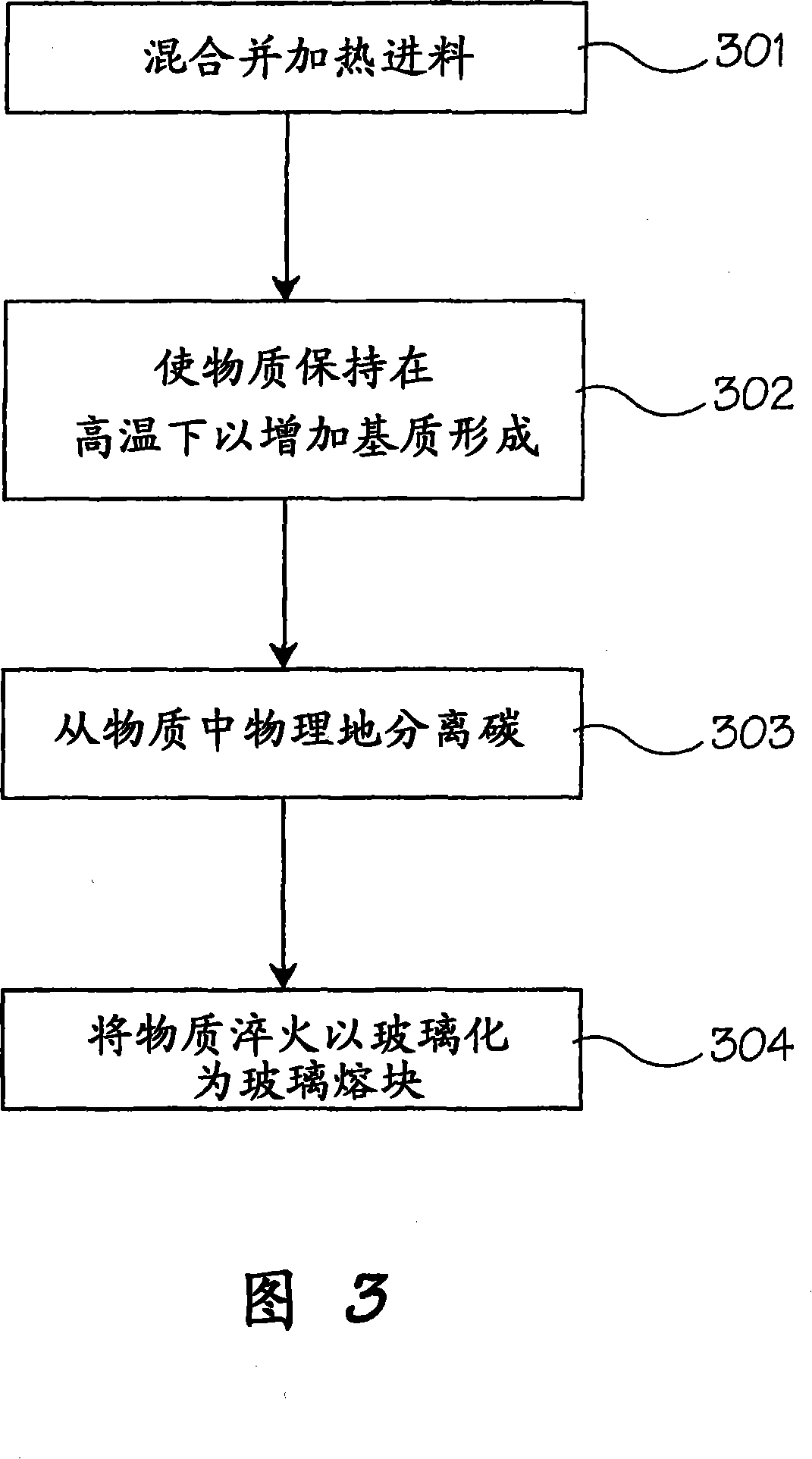Process and apparatus for converting spent potliners into a glass frit, and resulting products
A waste tank lining and glass technology, applied in fluorine/hydrogen fluoride, solid waste management, silicon halide compounds, etc., can solve the problem of not being able to provide captured fluorine
- Summary
- Abstract
- Description
- Claims
- Application Information
AI Technical Summary
Problems solved by technology
Method used
Image
Examples
Embodiment Construction
[0057] The present invention generally provides the conversion of spent tank lining (SPL) or other hazardous materials from the aluminum manufacturing industry into commercially available glass frits of amorphous sodium and calcium fluoroaluminosilicates (e.g., currently under the trademark for CAlSiFrit ) and high-carbon materials (for example, currently under the trademark CAlSiCoke of) pyrometallurgical methods and devices. The spent tank liner, calcium oxide source and silicate source are fed into the non-burner end of the counter-current rotary kiln. The raw material is heated to destroy the cyanide, convert the fluoride salt to calcium fluoride and form a homogeneous liquid mass. Carbon is then physically separated from the feed in a fixed bed furnace in series with a rotary kiln, and the feed is vitrified. Both the rotary kiln and the fixed bed furnace are connected to the waste gas treatment system.
[0058] The term "waste tank liner" is known in the art. The...
PUM
 Login to View More
Login to View More Abstract
Description
Claims
Application Information
 Login to View More
Login to View More - R&D
- Intellectual Property
- Life Sciences
- Materials
- Tech Scout
- Unparalleled Data Quality
- Higher Quality Content
- 60% Fewer Hallucinations
Browse by: Latest US Patents, China's latest patents, Technical Efficacy Thesaurus, Application Domain, Technology Topic, Popular Technical Reports.
© 2025 PatSnap. All rights reserved.Legal|Privacy policy|Modern Slavery Act Transparency Statement|Sitemap|About US| Contact US: help@patsnap.com



